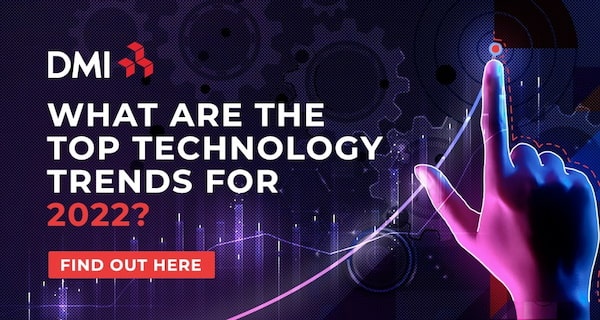
3 Ways to Accelerate Innovation in the Federal Government
Over eight out of 10 federal executives believe that collaboration between humans and machines is critical to future innovation. Yet, only 18% think their workforces are prepared to interact and collaborate with intelligent technology, according to FCW.
We should expect to see technological advancements in federal environments in the following areas:
- Robot Process Automation
- Blockchain
- Artificial Intelligence
Federal Applications of RPA
Federal agencies are rapidly adopting Robot Process Automation (RPA). They’ll use RPA across multiple functions including finance, acquisition, IT, security, HR, and more. According to WWT, they’ll use RPA for:
- Data entry and data reconciliation
- Spreadsheet manipulation
- Automated data reporting
- Analytical functions
By employing RPA, government agencies will reduce errors and improve compliance and reduce repetitive tasks, freeing up workers for more “high-value work.” Federal agencies are increasingly relying on RPA. In 2021, the Federal RPA Community of Practice released an RPA Playbook recommending best practices for federal agencies to incorporate RPA.
A Blockchain-Based Government Model
Blockchain, a distributed ledger technology, will also see more usage in 2022 and beyond. In federal contexts, individuals, businesses, and governments use cryptography to share secured resources over a distributed ledger, says Consensys. This protects sensitive citizen and government data and eliminates a point of failure.
Blockchain can support government and public sector applications, including:
- Digital currency/payments
- Land registration
- Identity management
- Supply chain traceability
- Taxation
- Voting (elections and proxy)
- Corporate registration
The results? Blockchain will help secure government, sensitive, and business data and reduce labor-intensive processes. It will also reduce excessive management costs, reduce the potential for corruption and abuse, and increase trust in government and online civil systems.
AI & Government Use Cases
AI is one of the most widely adopted “new” technologies for federal technologies. However, its use in federal capacities is only beginning. In these contexts, AI can help:
- Adjudicate cases
- Improve military readiness
- Conduct data analyses
- Streamline administrative functions
- Conduct regulatory and law enforcement
FCW.com predicts that the federal workforce will boost $364 billion in productivity by 2028. Federal workers perform a lot of complex work that AI could easily augment. AI could expedite about half of the time federal workers spend on current tasks.
AI will impact federal “science and engineering” jobs the most. The second-most impacted area will be process and analysis jobs, and technical equipment maintenance jobs rank third.
One use case of AI in government is how it finds usage in the Social Security Administration. Claim adjudicators use AI-based tools to make the disability benefits process more efficient. They use machine learning to identify medical documentation required to support a disability claim. This helps reduce back-and-forth with the claimer and the other organizations and enables the adjudicator to spend more time reviewing the claim.
Another federal environment AI has found success in is the U.S. Patent and Office Trademark section. Upgrades use machine learning and design thinking to understand what examiners are looking for as they process information. The sooner they connect to more relevant information, the more quickly and effectively they’ll be able to review patent and trademark applications.
How to Successfully Integrate AI in Federal Contexts
Even though AI technology has plenty of potential in government capacities, it still has a ways to go for widespread success. Federal agencies will need to significantly invest in education, training, and technical systems and support. Nearly $67 billion of AI productivity gains will disappear if organizations don’t provide training to use and operate around the technology.
Agencies will need to invest in making AI tools explainable. It needs to be clear to the employees how to use them, what they’re for, and why they’re important. AI tools have to be continuously managed and updated to make sure their results are accurate, relevant, and free of bias. AI can certainly make governments more productive and efficient. However, agencies need to ensure that they provide the support to maximize the potential of AI.
Innovation in Federal Agencies in 2022
Government agencies are beginning to embrace innovative technologies like RPA, blockchain, and AI, but they need the right education and support to make sure they’re impactful. To gain more knowledge about the technical applications that will matter in 2022, review DMI’s new 2022 Industry Trends Report.
![[FREE RESOURCE] 10 Technology Trends You Need to Know](https://no-cache.hubspot.com/cta/default/8444324/70f3087e-225d-45f6-bb20-e5ed06bf0834.png)
